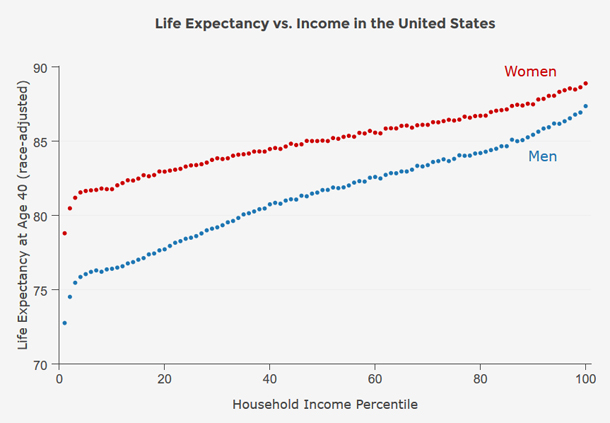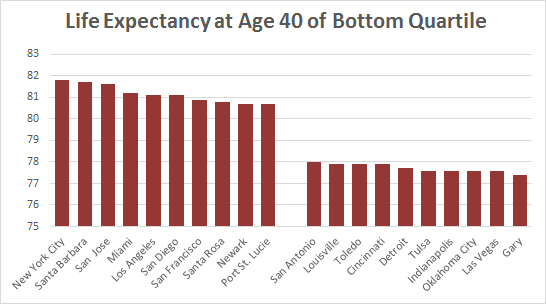This really is the chart of the day. It seems like it’s been making the rounds on about half the blogs I read:

It comes from the Health Inequality Project, and it will come as no surprise to regular readers of this blog. Still, these findings are even more dramatic than usual. The difference in life expectancy between the poorest and richest is a full 15 years for men and 10 years for women. But this chart, based on HIP’s data, is important too:

In the largest coastal cities, life expectancy is four or five years longer than it is in smaller, Midwestern cities. If you take a look at the map in HIP’s report, there’s a broad swath running diagonally from Texas up through the rust belt that has the lowest life expectancies in the nation. Why? Perhaps because of this:
Much of the variation in life expectancy across areas is explained by differences in health behaviors, such as smoking and exercise. Differences in life expectancy among the poor are not strongly associated with differences in access to health care or levels of income inequality. Instead, the poor live longest in affluent cities with highly educated populations and high levels of local government expenditures, such as New York and San Francisco.
If you’re looking for policy conclusions, I can toss out two off the top of my head. First, effective public health campaigns matter. Reducing smoking and encouraging better eating and exercise can make a big difference. Second, increasing the retirement age is the worst possible way to fix Social Security’s funding problems. It’s already 67 for everyone under the age of 55. This means that among the rich, a two year increase reduces their retirement life by about two years out of 20—roughly 10 percent. But among the poor, it takes two years out of ten—roughly 20 percent. There’s no need to balance the Social Security trust fund on the backs of the poor. We have plenty of better alternatives.

















